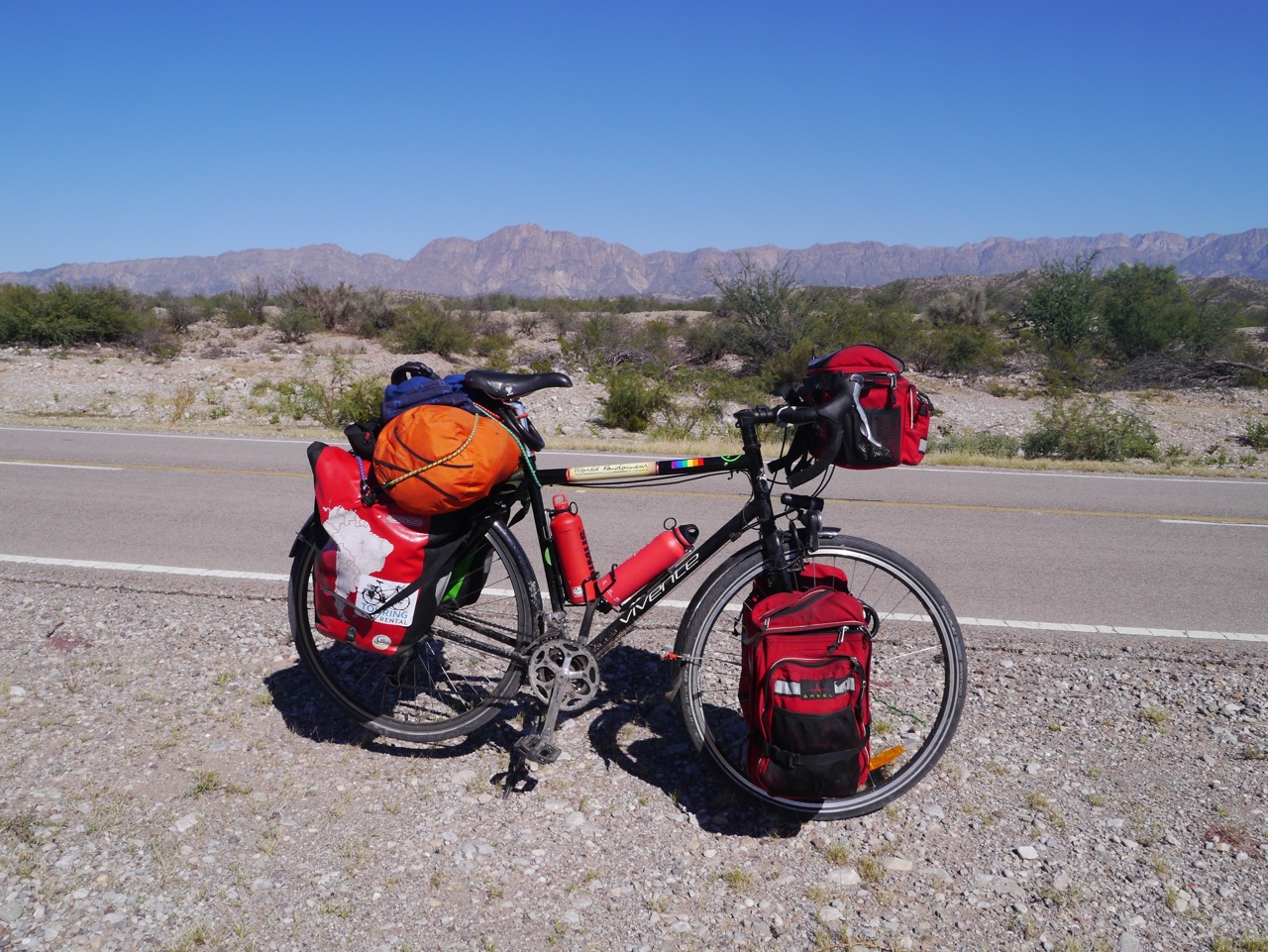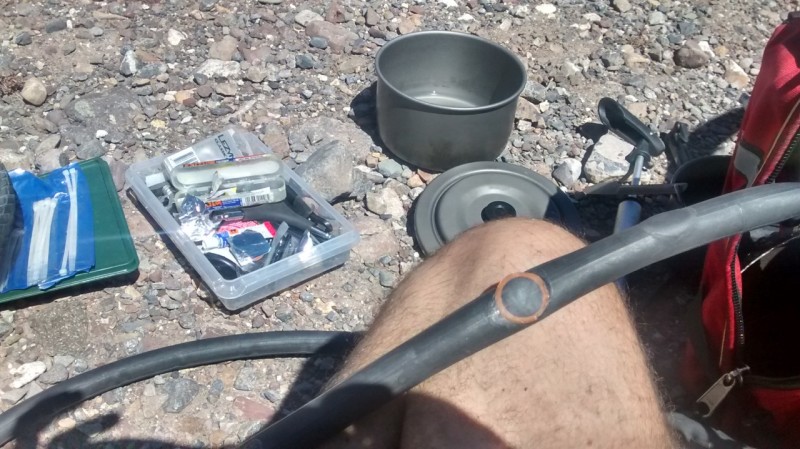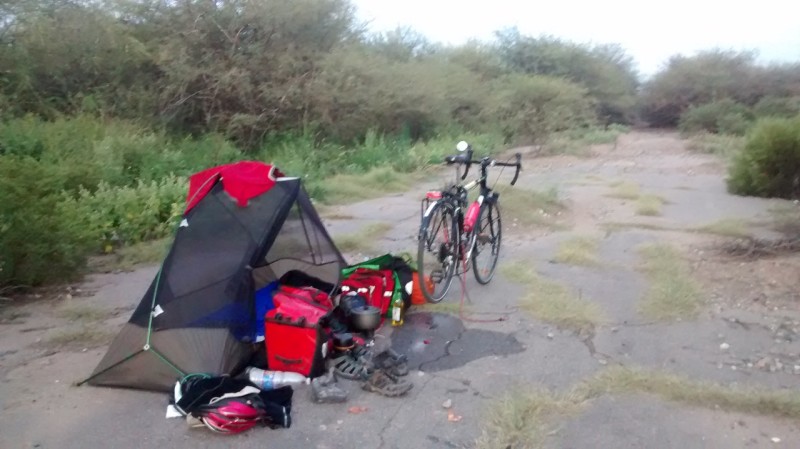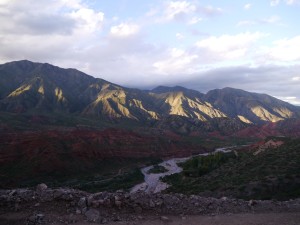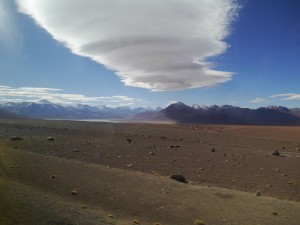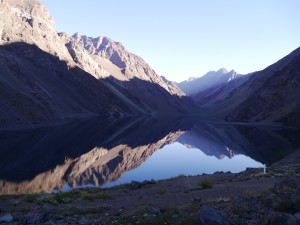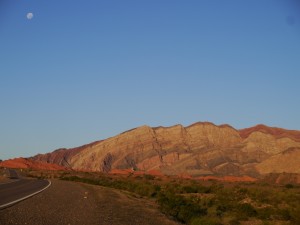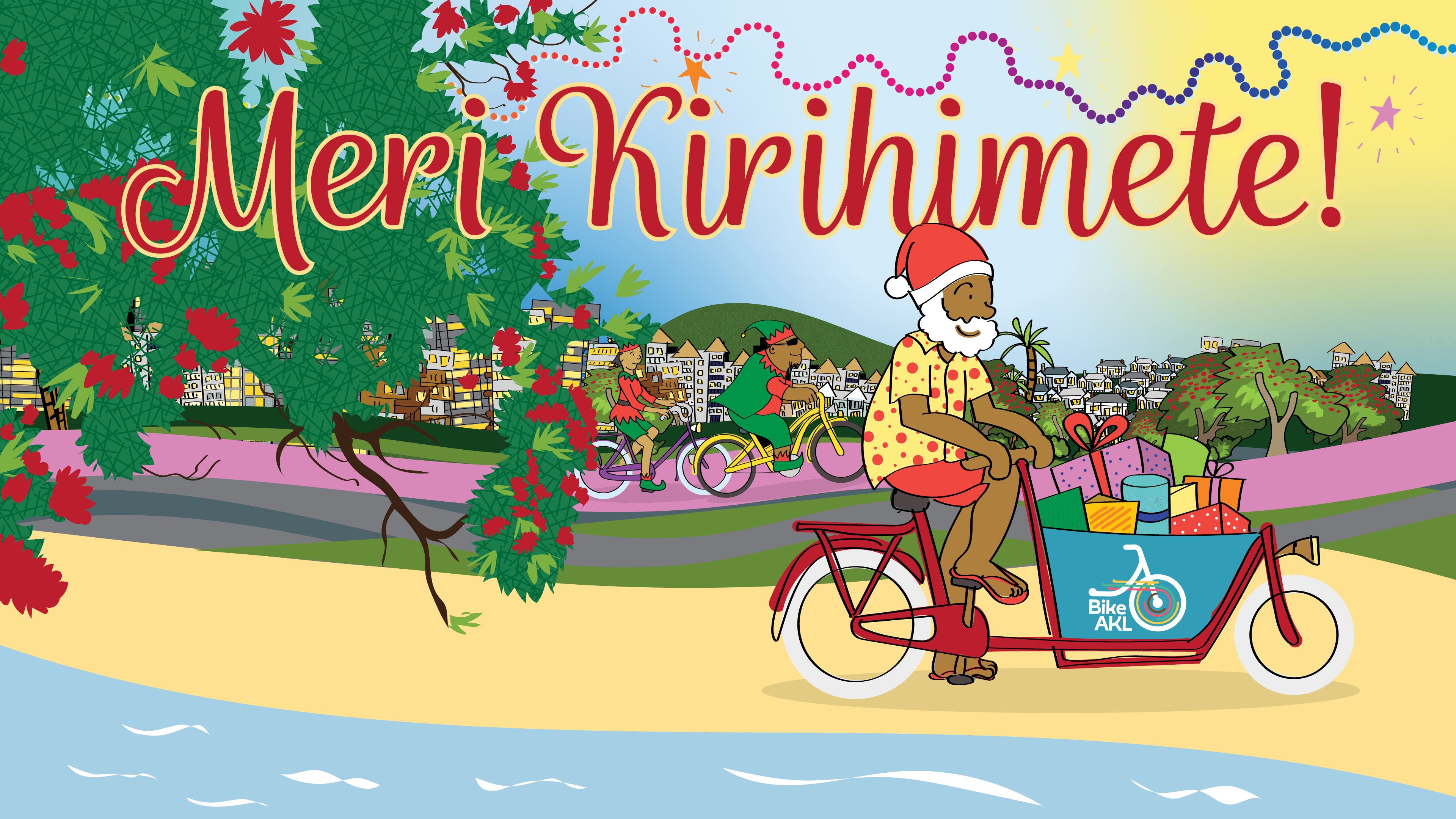Ever fancied being a tourist on two wheels, seeing it all from the seat of a bicycle? Christopher Dempsey recently made a dream-come-true trip through Argentina on a bike. Here, he shares what he’s learned when it comes to cycle touring…
The Bike
Despite claims that you can tour on almost any bike (and theoretically, you can – there is a guy currently doing a world tour on a unicycle), the practicalities of doing a tour mean you need a few critical things. A ‘relaxed’ frame to enable you to pedal for 2, 3, 4 hours without a problem (having mini-breaks along the way). A steel-based frame to provide you with a sense of solid security, and comfort. Good quality componentry.
Essentially, it’s about your level of comfort about riding a loaded bike over long distances. There is a sweet spot somewhere in the confluence of money, quality and technical skills. I chose a Vivente World Randonneur because it was specifically designed as a touring bike (it also primarily functions as my commuter ride). It has good componentry, meaning you’re less likely to run into mechanical trouble, and has a cromoloy frame. The cutest thing about it when I bought it was the horn which came installed instead of a bell.
There are other brands out there, notably Surly Long Haul Trucker (LHT), from the US, and the more pricey Thorn (UK). Here’s a good online comparison guide.
I have a small box full of tools, and there is a small pump behind my knee. It’s critical that you know a few basic mechanical skills, like changing an inner tube, and keeping your chain greased. Learn a few key skills, and build up a small library of bike tools you can take with you in a small bag or box.
The Bags
You’ll need panniers to store your stuff in. The most popular touring pannier is by far and away Ortlieb panniers. They are pretty waterproof, and simple to use. I have two rear Ortlieb panniers, while for the front panniers I chose to mix it up and have Arkel panniers which have the advantage of pockets (Ortlieb’s don’t have pockets – they’re just one large sack).
The handle-bar bag is Arkel. This has the advantage over Ortlieb of having stainless steel attachments, rather than plastic. I got the large size, which takes up a lot of space between the handles, but also offers a lot of storage space for camera, snacks, maps, etc.
Some people also have dry sacks which can be stored on the rear rack, appropriately secured for cycling. This has the advantage of gaining extra storage space. I put my tent and sleeping bag/mat in mine, freeing up room in my panniers.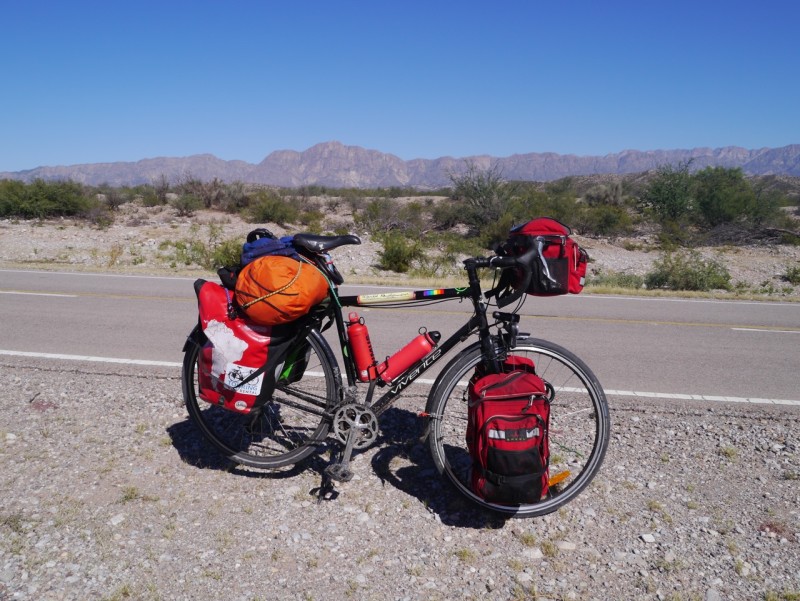
The Accommodation
After your bike and bags, you’ll need a tent, sleeping bag, and sleeping mat. Here again, you are looking for that sweet spot between price, durability and lightness. There is plenty of choice of tents, but a popular one is the MSR Hubba (one-person tent) or Hubba Hubba (two-person tent). I have a Hubba, which is light (1.3kg) and easy to set up on a variety of surfaces. I love it, but sometimes I wish for a little more room, as the size is just slightly larger than a king single bed. But it does the job, and is well suited for my style of touring (short tours).
I also chose my sleeping bag and mat on the basis of quality and lightness. They do the job pretty well.
I didn’t use the fly very often on my Northern Argentina tour, as the weather was dry and warm. Here is my normal set-up, with panniers on the outside of the tent. When the fly is clipped on, there is a small vestibule where the panniers can be stored.
The Kitchen
From the bedroom to the kitchen. The range of cooking equipment is not as great, but again, you are looking for lightness, and adaptability. I’ve got a Primus Omnifuel cooker, which runs off a variety of liquid fuels and also off gas canisters. This gives me flexibility in fuel source, which is helpful if you will be touring overseas.
I use titanium pots, and have a lightweight skillet. Throw in lightweight cups, plates and utensils and you’ll be sweet. For my trip I picked up a cheap large cooks’ knife in the supermarket in Santiago, because they are so useful in the kitchen for chopping things. The skillet is useful for making sauces for pasta. I have to have my fresh coffee in the morning, so I have a lightweight grinder and a gold mesh filter that fits over a stainless steel insulated tall mug (which does double duty as a wine glass in the evening).
Typical on-road meals were porridge in the morning with dried raisins and milk (milk powder reconstituted the night before), cheese and crackers for lunch, and pasta or other carbohydrates with tomato-based sauce for dinner. Pro tip: eat plenty when on tour. You’ll burn through calories, so listen to your body and stop when it tells you it needs fuel.
With bike, sleeping and kitchen sorted, the rest is pretty straightforward. Clothes (merino is best), shoes, books, camera, toiletries, medical supplies etc.
I took about 1.5 years to assemble my equipment, looking out for sales to save money. What I have now is a classic cycle touring set-up – a bike with four panniers; tent, mat, sleeping bag, and stove.
There are other styles of cycle touring, such as the increasingly popular bike-hiking (a cross between MTB-ing and tramping), the credit card tour (no tent or kitchen, and credit card accommodation along the way), ultra-light touring (stripping everything down to basics – essentially a sleeping bivvy, no kitchen and minimal clothes), and gravel touring (only taking gravel roads). Each of these styles requires a slightly different set-up, so research these if you are interested in these kinds of touring.
There is plenty of information on the web about cycle touring, and several groups on Facebook. It’s easy to find information about all sorts of technical matters (such as gear sizing, or how to stay connected while on the road).
One of the best sites to browse (addictively, I might add), is the excellent Crazy Guy on a Bike. It’s a journal-based website about cycle tours people have done; the name came about because Neil, the owner, was on a cycle tour one day, and someone told him he was crazy to be doing it. Surprisingly I had two people tell me the exact same thing on my tour in Northern Argentina! You can browse through an amazing number of journals (the most epic being one by Jeff Kruys – who did a tour of the Americas over 4 years), and it also has equipment forums and classified ads. I have two journals on this website (one here).
The Kennett brothers’ book Classic New Zealand Cycle Trails is deservedly popular and worth getting hold of. My copy accompanied me on the tour described in the CGOAB link above.
Now you have your bike and equipment, and you have researched possible routes. What next?
JUST GO!
Start with an easy tour first. For example, do a Sub-24 tour – 24 hours or less – where you cycle out somewhere, like a regional park, and camp out overnight before returning the next day. Do that a few times, and then venture further afield – say, cycle to Thames, or Wellsford (using SH16). This will give you confidence about cycle touring; how to ride on-road, setting up your tent, cooking, packing up in the morning, etc.
Some things about cycle touring are a given:
- You will have a mechanical fault at some point. It may be major or minor, but it will happen. You just have to go with the flow. If you can fix it, fix it. The beauty of a bike is that it is a relatively simple machine, so people use all sorts of fixes (like the old trick of using a folded dollar bill for punctures). If all else fails, you’ll need to find the nearest LBS (local bike shop). I was fortunate in Argentina as road cycling is incredibly popular despite the awful condition of the roads, so bike shops were easy to find.
- You will have a bad day. It will be rainy, or cold, or incredibly windy. For my first ever tour, I rode to near Raglan from Pukekohe in the teeth of a blustery southerly. I swore like a trooper the whole way. Bad days will happen. Again, go with the flow. Those days are minimal in comparison with the good days, and trust me, the good days are what makes a cycle tour.
- Don’t sweat the kilometres. If you do 30k, you do 30k. If you do 130k, you do 130k. It really doesn’t matter. My shortest day ever was 7k, from San Juan to Albardon. My longest ever was 162k from Raglan to Parnell, but that was unique, as I didn’t carry all my panniers (a friend took them up to my place in his car). With loaded panniers I can do around 120k, but that’s not every day. Most days average around 60 – 80k.
- You will find most people are helpful and welcoming: 98% of the people you meet are lovely, and the rest maybe not so. Which means most of the time you will meet good people. The bad, or the uncertain – you just ride away from.
Cycle touring might not be for everyone, but for everyone who does try it, I promise that you will be astounded and overwhelmed by the landscape, the sights, smells, sounds and touch.
Tailwinds!

